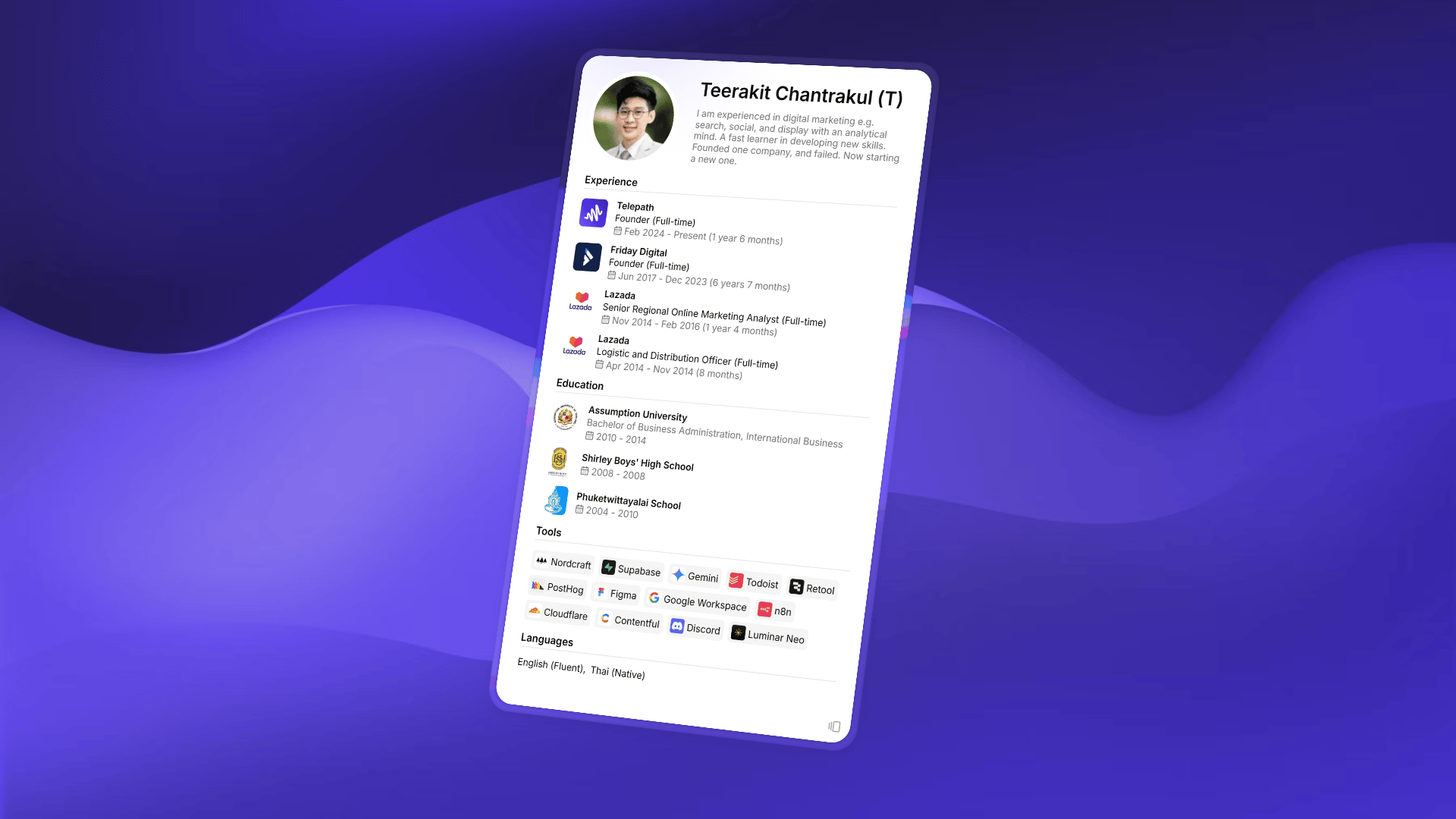The resume, a single piece of paper, has been the standard for job applications for an incredibly long time. In fact, the first known document resembling a modern resume was created by Leonardo da Vinci in 1482, when he wrote a letter to the Duke of Milan, Ludovico Sforza, outlining his various skills and qualifications in an attempt to secure employment.
It was invented in an era before computers, mobile phones, and the internet. Yet, here we are in 2025, still largely relying on this traditional format. It got me thinking: if the resume didn't exist today and we had to invent it from scratch, what would it look like?
The Problems with Today's Resume
Let's look at how resumes are used now. No one really creates physical paper resumes anymore. We generate them as PDFs or Word files and send them digitally. Employers then process these files in one of two ways:
Human Review: A person reads the resume on a screen – a desktop monitor or, increasingly, a mobile phone. Very few people print out every resume they receive.
ATS (Applicant Tracking System): The file is fed into software that scrapes information from the "paper-like" PDF and reformats it to be searchable and easier for recruiters to read.
This raises a crucial question: why are we creating resumes in a format that's so inconvenient that we need special software to make them usable?
Furthermore, the primary device for consuming information today, especially for busy recruiters, is often a mobile phone or tablet. Traditional A4 or letter-sized PDF resumes are a pain on these small screens. The text is tiny, requiring constant pinching to zoom and dragging around to read. It's simply not intuitive.
Another common scenario involves people posting their resumes on social media, like Facebook groups, when looking for work. Beyond the poor readability on mobile, there's a significant security risk. People often post the exact same resume they'd send to an employer, which includes sensitive information like their phone number and email address. This exposes personal data to a public audience, which is incredibly unsafe.
Why not create a resume that's designed for how we actually live and work today?
The Rise of Digital Profiles... and Their Limits
In this digital era, we already have sophisticated digital resumes. Platforms like LinkedIn offer comprehensive profiles where you can scroll through all a person's information – just like a resume, but perfectly fitted for your mobile screen and easily navigable. At Telepath, we also offer a similar digital profile that could potentially replace the traditional resume entirely.
However, the challenge lies in conveniently sharing these digital profiles. Most companies still expect and accept PDF files (or sometimes images) as official application documents. Even when sharing on social media, while you can share links, it's often not very engaging. People promoting themselves usually share a snapshot of their traditional resume as an image. If you're going to post an image of your resume, why not design it to fit today's digital landscape?
Let's Create Something In Between
This is where the gap lies: something between a static paper resume and an advanced, fully interactive digital profile. We need a compact, engaging snapshot – a "teaser," if you will – that can quickly capture interest. If a person is truly interested in working with the candidate, then the full, detailed digital profile (or even a traditional PDF resume) can still be provided.
Considering how media has evolved to fit the mobile screen vertically (think YouTube Shorts, TikTok, Instagram Stories), it makes sense that a modern resume should adopt a vertical format, like an Instagram Story, designed to fit a mobile screen perfectly.
So, the reinvented resume needs to be:
Mobile-friendly: It must fit a mobile screen, be easily readable without zooming.
Concise: You can't fit an entire traditional resume onto one mobile screen while keeping it readable. It needs to contain only the most important information, making it quick and easy to grasp a candidate's key qualifications.
Engaging: It should be quick, easy, and offer vibrant customization (like changing colors) to express your unique personality while upholding a professional image.
Secure: Crucially, it should allow users to opt out of sensitive information like phone numbers and email addresses for public sharing.
Introducing "Storysume"

This new format isn't meant to replace the traditional resume entirely, especially for large corporations with ATS. However, for the majority of companies that rely on human review, and for situations where you want to quickly share your profile with a human – a friend, a direct recruiter, or even on social media – this format is perfect. It's designed to be easily consumable on any device.
That's why I'm calling it Storysume. It's a mobile-first, secure, and concise way to present your professional profile.
While I believe that in the future, traditional resume formats will be obsolete and digital profiles will become the standard, we're not quite there yet. For now, the expectation remains that a PDF resume is the official document, and you can't simply send your digital profile to a company and expect to get hired.
Telepath shares this vision of ultimately replacing resumes entirely with universally usable digital profiles. But in the meantime, we can leverage something in between for the right situation.

You can generate your Storysume today from your profile on Telepath. Check it out and let me know what you think!

